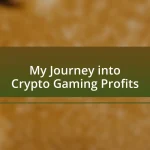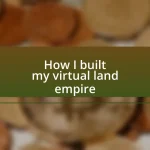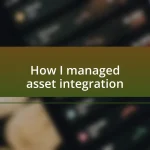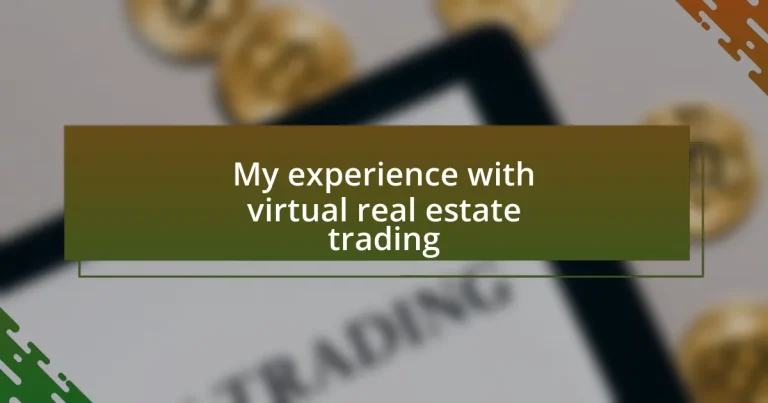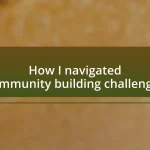Key takeaways:
- Virtual real estate trading blends creativity and strategy, focusing on community and potential for growth rather than just aesthetics.
- Selecting the right trading platform enhances the experience, with emphasis on user interface, features, and community engagement.
- Effective trading strategies include researching market trends, diversifying investments, and regular performance monitoring.
- Proactive risk management involves thorough due diligence and adaptability to market changes for safeguarding investments.
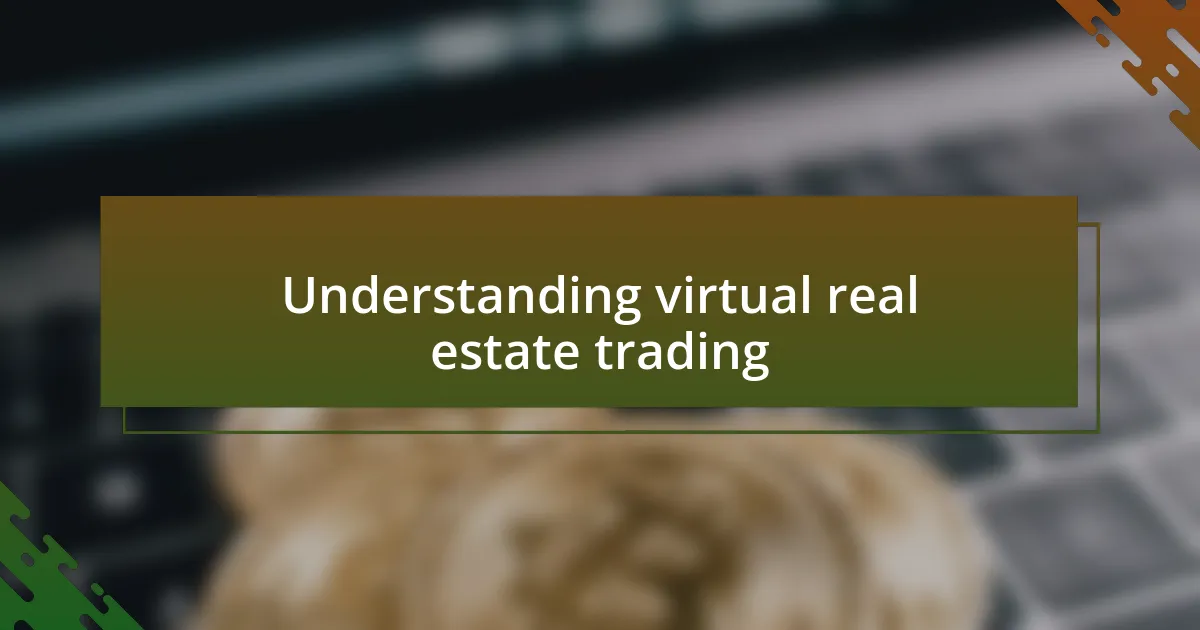
Understanding virtual real estate trading
Virtual real estate trading is an intriguing concept that merges the excitement of real estate investment with the digital world. When I first dabbled in it, I felt a rush, akin to exploring a new market. I remember logging into a popular platform and being amazed by the variety of virtual properties available, each with its unique charm and potential.
What captivated me most was the sheer creativity involved in these spaces. Unlike traditional real estate, where location is everything, virtual environments allow us to redefine value. I often found myself pondering: what makes a digital piece of land desirable? It’s not just about aesthetics; it’s about community, usability, and the potential for growth within these digital realms.
As I navigated the world of virtual real estate, I discovered the role of scarcity and uniqueness, reminiscent of classic art collecting. Each transaction felt like a blend of strategy and intuition. I learned to assess not just the property but the ecosystem surrounding it, which made every purchase feel personal and significant. This deeper understanding transformed virtual real estate trading into more than just a financial opportunity; it became a fascinating journey into creativity and innovation.
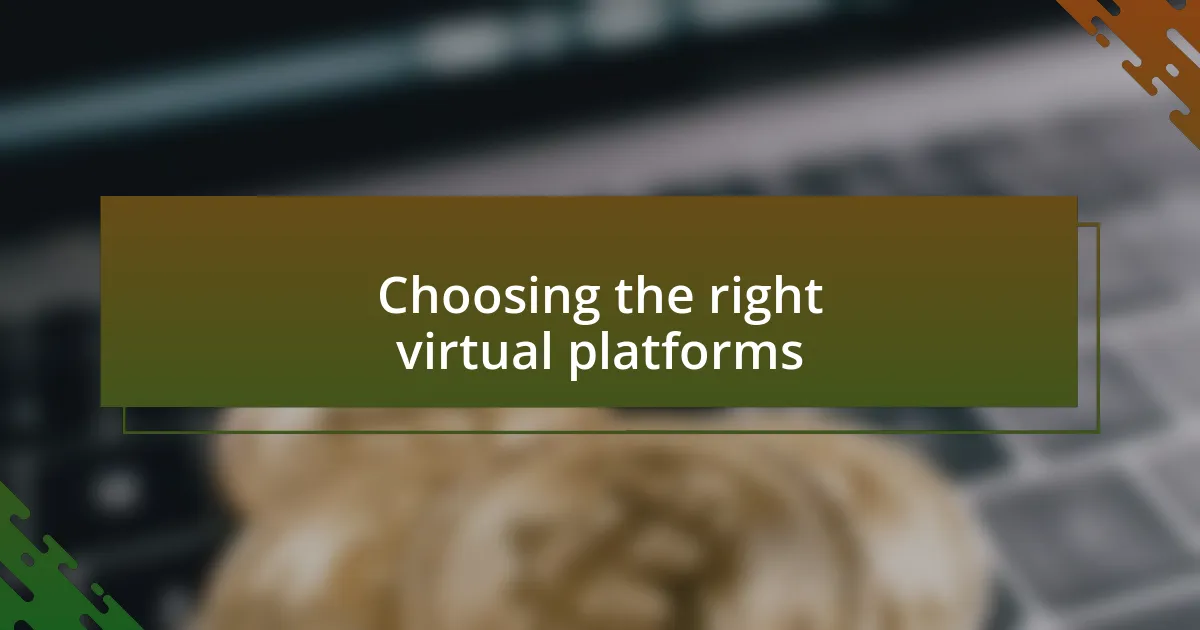
Choosing the right virtual platforms
Choosing the right virtual platforms is crucial for a successful trading experience. I still remember my early days when I felt overwhelmed by the sheer number of options available. Each platform had its own unique features, but what truly mattered was finding one that resonated with my trading style. For instance, some platforms offered extensive analytics tools, while others prioritized community engagement. Choosing wisely can significantly influence your strategy and outcomes.
During my journey, I realized that the user interface is another critical aspect to consider. A platform that feels intuitive can make the trading experience more enjoyable and less frustrating. I once struggled on a site that buried essential information beneath clutter, which cost me valuable time and opportunities. In contrast, finding a platform with a clean layout and responsive support made all the difference in increasing my confidence as a trader.
When I began, I also prioritized platforms that fostered a robust community. Engaging with other traders provided insights I wouldn’t have discovered on my own. This collaboration turned solitary hours into shared experiences, which, for me, enhanced the learning curve. Essentially, the right platform is one that aligns with your personal goals and preferences, creating an environment where you can thrive.
| Platform | Key Features |
|---|---|
| Platform A | Advanced analytics tools |
| Platform B | User-friendly interface |
| Platform C | Strong community engagement |
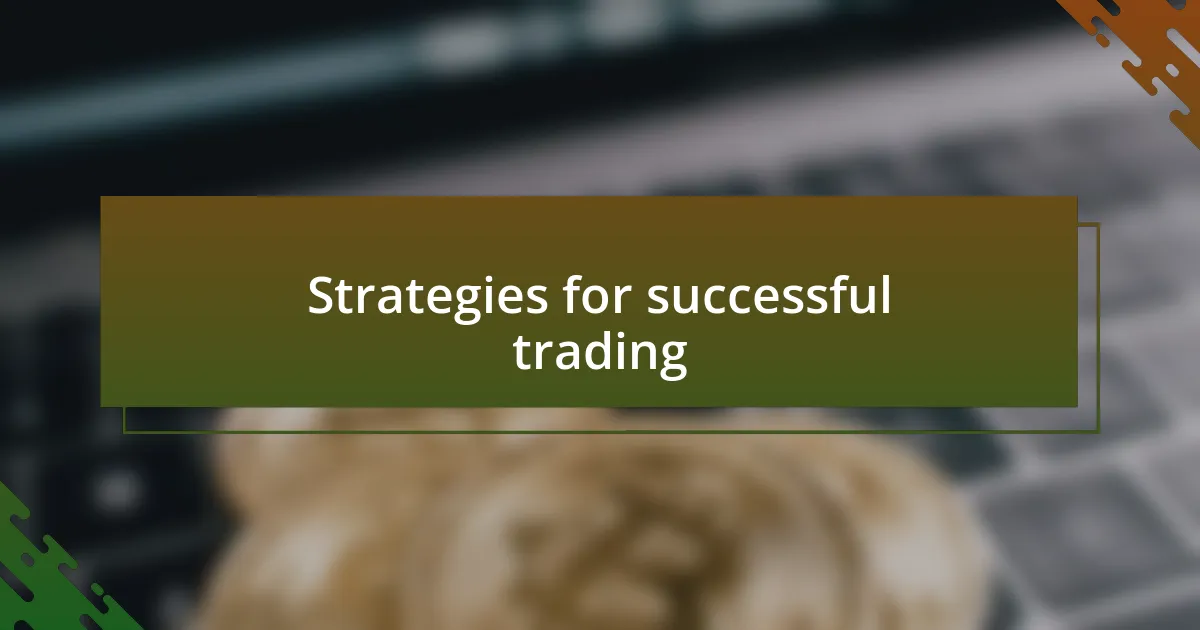
Strategies for successful trading
Successful virtual real estate trading requires careful planning and adaptive strategies. One approach I’ve found beneficial is establishing a clear entry and exit strategy. In one instance, I hesitated during a trading decision, leading to a missed opportunity that still stings. Sticking to a plan can help eliminate emotional reactions that might cloud judgment. Creating a checklist for each trade, including factors such as price targets and risk management, has proven essential in maintaining that discipline.
Here are some effective strategies to implement:
- Research Market Trends: Stay updated on shifts in virtual real estate trends and demand. I constantly check relevant forums and news sources to make informed decisions.
- Diversify Investments: Don’t put all your assets into one project. I’ve seen the impact of diversifying my holdings across different properties, which mitigates risks significantly.
- Engage with the Community: Active participation in trader groups has allowed me to share insights and learn from others’ experiences, which often leads to the discovery of hidden gems in the market.
- Monitor Performance Regularly: Reviewing the performance of your trades regularly helps you tweak your strategies effectively. I learned this the hard way when I overlooked a struggling investment for too long.
By incorporating these strategies into your trading routine, you can navigate the complexities of virtual real estate trading with greater confidence and success.
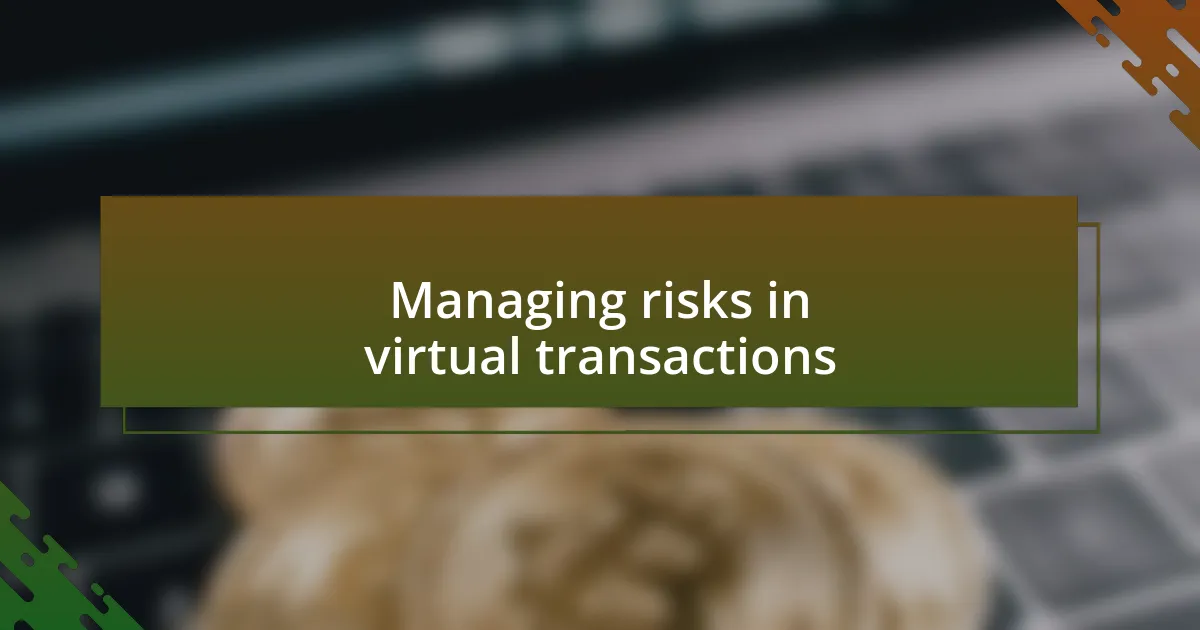
Managing risks in virtual transactions
Managing risks in virtual transactions can feel daunting, but I’ve found that a proactive approach makes a world of difference. For example, when I first entered this space, I experienced a sudden price drop that caught me off-guard. That experience pushed me to implement strict stop-loss measures, ensuring that I wouldn’t experience such a shock again. Are you prepared to safeguard your investments in a similar way?
One essential tactic I embrace is thorough due diligence before committing to an investment. I recall a time when I skimmed over the details of a property that seemed promising at first glance. Ignoring the fine print led to unforeseen complications later. Taking the time to vet each opportunity not only builds confidence, but it can also prevent costly mistakes. How often do you factor in this level of scrutiny in your own transactions?
Finally, risk management isn’t just about protection; it’s also about adaptability. When the market shifts, I’ve learned to quickly reassess my holdings and criteria. For instance, during one downturn, I pivoted my focus to properties with more stable returns, instead of chasing high-risk gains. How do you typically adjust your strategy when faced with changing market conditions? Being flexible and responsive can turn potential losses into opportunities for growth.
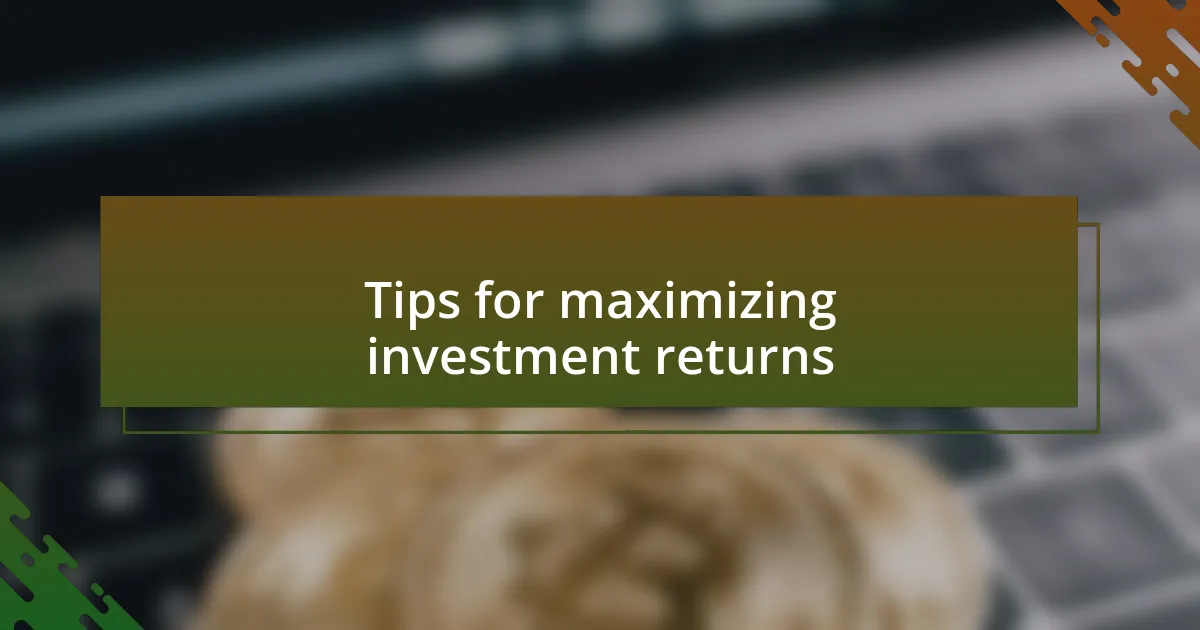
Tips for maximizing investment returns
To maximize investment returns, I’ve found that diversification is key. Instead of pouring all my resources into a single property, I spread my investments across various types of virtual real estate. This approach not only mitigates risk but also enhances potential profits from different market segments. Have you considered how a mix of assets might benefit your portfolio?
Another critical factor is staying updated on market trends. I remember when a new virtual neighborhood became the next big thing; I had my finger on the pulse and was able to invest just before prices surged. I often wonder how many investors miss out on opportunities simply because they aren’t paying attention to emerging trends. It’s fascinating how timely information can transform an ordinary investment into a lucrative one.
Finally, always engage with the community. I’ve gained invaluable insights from networking with other investors who share their experiences and strategies. I once discovered a hidden gem property through a casual conversation at a virtual conference. This leads me to ask: Are you tapping into the collective intelligence of the community around you? Building relationships can unlock opportunities that you might not find on your own.





